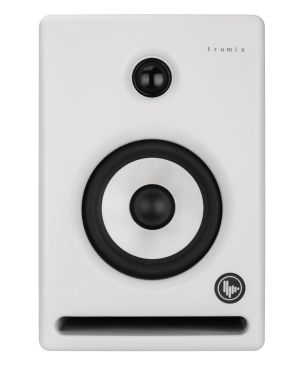
-
![B-Stock ADAM Audio A8H-L Side Near/Midfield 3-Way Studio Monitor]() In Stock
In Stock -
![Yamaha HS7 Active Studio Monitor, White]() In Stock
In Stock -
![Genelec 7050C Active Subwoofer]() In Stock
In Stock -
![Genelec 8040BPM Active Studio Monitor Matt Black (Each)]() In Stock
In Stock -
Backstage DealIn Stock
-
![Genelec 8330A SAM Studio Monitor Dark Grey]() In Stock
In Stock -
Best Seller
![ADAM Audio T5V Studio Monitor]() In Stock
In Stock -
![B-Stock ADAM Audio A8H-R Side Near/Midfield 3-Way Studio Monitor]() In Stock
In Stock -
![ADAM Audio A4V 2-Way Nearfield Studio Monitor]() In Stock
In Stock -
Starter Pack
![Trumix Complete 5" Studio Monitor Bundle with Stands]() In Stock
In Stock -
PMT Top Pick
![Trumix AR5 Active Studio Monitors (Pair), White]() In Stock
In Stock -
![Genelec 8320A SAM Studio Monitor Dark Grey]() In Stock
In Stock -
Starter Pack
![Trumix 5" Complete Beginners Studio Monitor Pack]() In Stock
In Stock -
![Adam Audio A4V Nearfield Monitor 2-way 4 Inch Woofer, White]() In Stock
In Stock -
![ADAM Audio A44H Centre Studio Monitor]() In Stock
In Stock -
Starter Pack
![Trumix 7" Complete Beginners Studio Monitor Pack]() In Stock
In Stock -
![TruMix AR5 Active Studio Monitor - White (Single)]() In Stock
In Stock -
![Genelec 8341awm Active Studio Monitor]() In Stock
In Stock -
B-Stock
![B-Stock ADAM Audio A7V 2-Way Nearfield Studio Monitor]() In Stock
In Stock -
![Yamaha HS8 Active Studio Monitor Limited Edition Matched Pair]() In Stock
In Stock -
![Genelec 8030C Compact 2-way Active Monitor (White)]() In Stock
In Stock -
![PreSonus Eris 3.5 (Pair)]() In Stock
In Stock -
![Yamaha HS5 Active Studio Monitor in White]() In Stock
In Stock -
![ADAM Audio A8H-R Side Near/Midfield 3-Way Studio Monitor]() In Stock
In Stock
A HUGE SELECTION OF STUDIO MONITORS AND MONITOR SPEAKERS TO SUIT ALL BUDGETS
There are many different types of studio monitors, but most commonly they will be either passive or active. Active studio monitor speakers have internal amplifier sections and are often bi-amplified. Passive models require a peripheral amplifier to work.
Most professional setups will use active monitors, which offer a more defined sound, due to features such as optimised power amps for each driver and more precise line-level crossovers, for instance.
Buying your first pair of studio monitor speakers or upgrading to a new model can be a daunting and often mind-blowing experience.
At PMT we carefully select our range and offer only the best quality speakers at ultra competitive prices so you get the best sound for your studio or home set up at a budget that suits you.
Studio Monitor FAQs
-
How much do decent studio monitors cost?
The price of good studio monitors begins at around £80. Some good brands are ADAM Audio, KRK, M-Audio, and Yamaha.
-
What are the best inexpensive studio monitors to buy?
Some of the best inexpensive monitors are produced by ADAM Audio, KRK, M-Audio, and Yamaha.
-
Do I need 1 or 2 monitors?
For mixing in stereo you will need two separate monitors. This will allow you to hear the music across the separate left and right channels.
-
What is the difference between studio monitors and speakers?
Studio monitors are designed for use in 'near-field' scenarios, delivering a flat output for low-volume environments. Monitors are usually active and are powered speakers, allowing for a more detailed dynamic response compared to other speakers.
-
How should I EQ studio monitors?
If your monitors have an EQ capability then you can use it to cut out unwanted frequencies that might be occuring due to the shape and size of your mixing room. Try to neutralise the room and hear the music with the most accurate response possible.

































